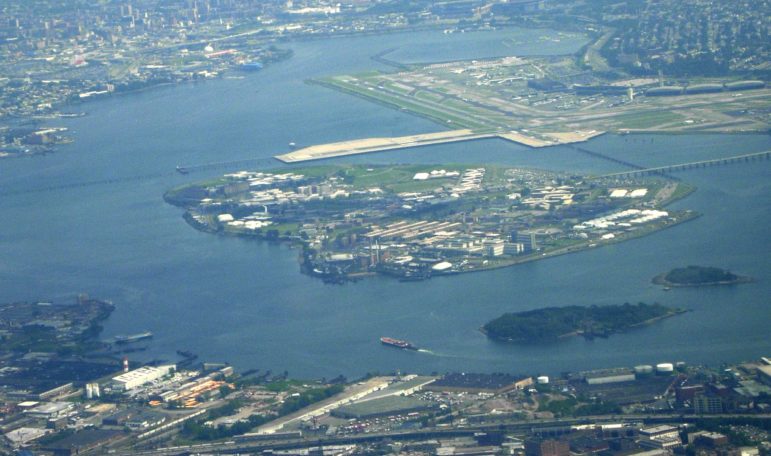
Cdogsimmons
Rikers: isolated, troubled and obsolete.
The basic background:
Rikers Island is a 413-acre landform off Queens where 10 of the city’s jails and the bulk of its jail population is held. The island, which has served as a jail since 1932, holds people who have been convicted of misdemeanors and are serving sentences of less than a year, people convicted of other crimes awaiting transfer to a state correctional facility, and people awaiting trial. The last category is the largest, consisting of people remanded to pre-trial custody—meaning no bail was set—or who had bail set but did not pay it. Some 63,000 people passed through city jails in fiscal 2016, and the average daily population was 9,790. The jails on Rikers and elsewhere are operated by the Department of Correction, with a budget of about $1.3 billion and a uniformed force of 9,800.
Why we’re talking about this now:
In 2014, Rikers was the target of devastating reports by the New York Times and the U.S. Attorney’s Office that exposed mistreatment of prisoners, especially the mentally ill. The de Blasio administration began a series of reforms. By some measures, violence increased in the jails, despite decreasing population, and there were growing calls to move jails off the island. Proponents for this move argued that the jails on Rikers are poorly constructed and dangerous, that the island’s remote location makes it harder to get defendants to court and that visitors have a hard time reaching the island to maintain family relations. In March, Mayor de Blasio committed the city to moving toward the closure of Rikers, shortly before a commission headed by former Chief Judge of the New York Court of Appeals Jonathan Lippman recommended the same.
What you need to read:
Rikers: Where Mental Illness Meets Brutality in Jail (July 14, 2014)
U.S. Attorney’s Report on Rikers Island (August 4, 2014)
The New Yorker: Kalief Browder, 1993-2015 (June 7, 2015)
Lippman Commission Report: More Just NYC (April 2, 2014)
De Blasio Administration’s “Roadmap to Closing Rikers Island” (June 22, 2017)
City Limits coverage
What you need to think about:
Not everyone believes Rikers should close. Likely Republican mayoral nominee Nicole Malliotakis says the jails can be reformed and should remain on the island because the remote location prevents escapes. The correction officers union has also opposed the move.
Most elected officials in the city do support closure, as do many advocacy groups, but agreement stops there. That’s because closing Rikers depends on reducing the average daily population to about 5,000 and moving those people to new sites, and people disagree with the mayor on how to do both. Some believe de Blasio’s 10-year timeline to close the jails is too long. In addition, some are upset that de Blasio has not committed to opening a jail in each borough (something the Lippman commission recommended) and has instead said it’s up to local Councilmembers to volunteer to host a facility in their district.
Just as contentious, if not yet debated publicly: how to get to that 5,000-person threshold, which could require a substantial rethink of how the city approaches crime and punishment. In the last week we’ve seen a step taken to reduce the number of people cycling through jail—the dismissal by district attorneys in Manhattan, Brooklyn, Queens and the Bronx of 644,000 old warrants for low-level crimes.








